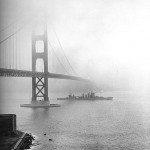Creating a Vibrant Picture of the Past with Crowdsourcing
 Stanford University researchers are turning to the crowd with three crowdsourcing projects that aim to give a more nuanced understanding of times past.
Stanford University researchers are turning to the crowd with three crowdsourcing projects that aim to give a more nuanced understanding of times past.
They are, Year of the Bay, 500 Novels, and Living with Railroads.
History Comes Alive
Year of the Bay is an initiative that’s collecting photos, videos, audio recordings, and memories to build up a vivid and diverse history of the Bay Area. A recent story in Stanford News outlines how one contributor is getting involved. Michael Rettie has boxes full of old photographs that he’s picked up from garage sales. He is posting his finds on a publicly accessible virtual map of San Francisco.
500 Novels is asking fans of British novels to help map how London was represented in the eighteenth and nineteenth centuries.
Living with Railroads connects amateur railway enthusiasts with scholars to combine their different sources and interpretations. The idea is to see if they can come to a better understanding of the rapid expansion of railways in the nineteenth century and how they changed communities in the US.
Crowdsourcing and Scholarly Research
Crowdsourcing enables scholars “to engage people locally, across the country, and around the world in real research,” said Zephyr Frank, an associate professor of history and director of Stanford’s Center for Spatial and Textual Analysis (CESTA).
However, there is some debate in academic circles about the merits and value of crowdsourcing for scholarly research. The three projects should provide a lot of information to help scholars find the best ways to engage the public to generate the most fruitful research.
Add your Comment
[LOGIN FIRST] if you're already a member.fields are required.
